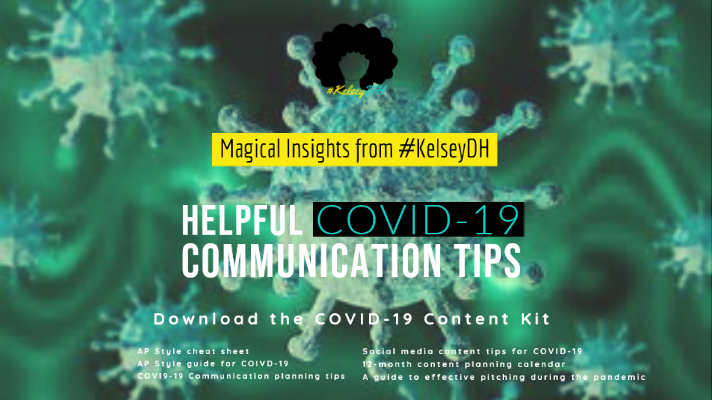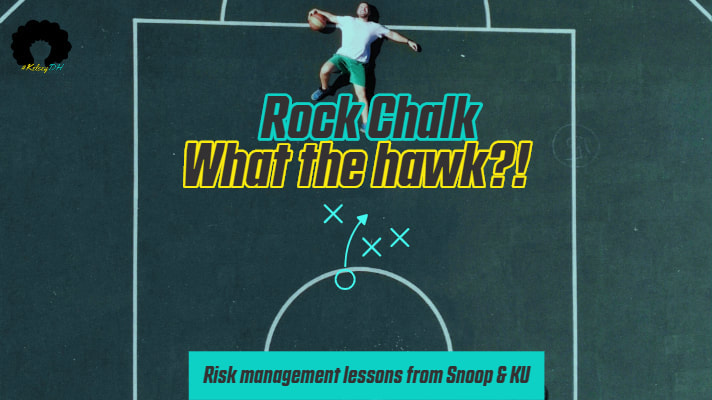|
Who would've thought when 2020 began that we'd all be undergoing so much change at once across the board -- every industry, every brand is adjusting to a new normal. As small businesses and organizations start cutting back budgets to maintain some savings with shutdowns and scaled-back products and services, many of you will find yourselves taking on more communications and social media management roles. Here a few tips, tricks and resources to help make things easier as you prepare to respond to the COVID-19 crisis. A Coronavirus Topical Guide To AP StyleFor those not familiar with AP Style, simply put, it's the standard writing style for journalists and communications professionals as defined by the world's oldest news service, the AP. Here are eight AP style tips to use in communicating about the coronavirus.
Three tips for communicating about the Coronavirus
1 Comment
Rock Chalk...What The Hawk?The University of Kansas Athletics Department had some serious ‘splainin to do following Snoop Dogg’s performance at Allen Fieldhouse. News of the fiasco quickly spiraled as the rapper’s performance featured profanity (surprisingly, no weed), pole dancers -- or acrobatic performers as they’re apparently called now -- and money guns. With the department already under fire for NCAA violations, you can bet they’re in full crisis management mode right now. Rock Chalk... what the hawk? We’ve yet to hear a serious explanation surrounding their choice of artist for the event and, quite frankly, it doesn’t matter much at this point; but they did release a statement saying that they “expected a clean version of the show.” Here are four magical insights (risk management tips, rather) from #Kelseydh that brands can use to avoid this kind of trouble in the future. Don't expect that anyone is willing to switch up for youI can’t call it for sure but it seems that the Jayhawk brand just wanted to create a show that was culturally relevant and generated buzz but, if family-friendly was the mission, Snoop wasn’t the right choice. A lot of college athletics departments operate separately from the overall university, but the idea that a lot of people miss is that, for fans, it all goes together -- KU is KU, Jayhawks...KU. Still, individual brands or not, they should have chosen an artist that aligned with the overall brand and values of the university. Snoop Dogg’s brand doesn’t equate to family-friendly and the rapper should not have been expected to do anything different from what has made him a fortune to meet the needs of a university athletics department. Keep in mind that when you’re looking to partner with a public figure or another brand, the first question you should ask is “which artist/brand appeals to our audience and aligns with our mission and core values?” Everything should point back to mission and values. If it’s not a fit, don’t risk it. Walk throughs and rehearsals will serve you wellWhile vetting the artist and what they stand for should have happened in step one, it’s almost always a better idea to run through your events so that you have an idea of what is happening, how, when and who is doing what. The team missed a key opportunity to remind Snoop to a) clean up his performance and b) fix any other issues they might find problematic like money guns, for example, or... poles center court. And, friends, if you honestly aren’t too sure, ask your PR team to come along. I’m sure we’ll find a couple of things to correct so we can attract the right kind of press. Plan for every scenario and every responseAnticipating a classic Snoop performance, for those aware, would’ve been number one on the list of concerns for a family-friendly event. For those not as aware, they trusted the rapper’s management team to ensure he came through with a clean performance. Big mistake. My advice for situations like this is to anticipate every crisis or issue and create a plan for how you’ll address it. You may use it and you may not, but at least you’re prepared to handle crap if it hits the fan. Things to plan for could’ve included profanity, negative response from stakeholders regarding artist choice, sound issues, capacity and crowd control to name a few things. I don’t think anyone could’ve anticipated pole dancers and money guns but, again, they could’ve prevented that if they had ran through the show beforehand or simply asked about the artist’s plans for the performance. Bonus tip? Any special requests or agreements — in this case, a clean show because it’s not his normal routine — are best agreed upon contractually. Safe partnerships for the rest of 2019 and beyond. #protectyourbrand #saveyourbutt There's such a thing as too riskyWe’ve discussed brands taking risks before haven’t we? Oh I think so - in our Diversity in Marketing talk! This one is a little different, though. Rather than risking it for the sake of social justice like the ones we talked about in Diversity in Marketing, KU risked it all for the sake of...well we don’t know for sure but my guess is buzz. With other NCAA allegations against them, this by no stretch of the imagination was the right move. Again, talk your ideas through with legal or PR so they can steer you in the right direction. One of the best times to play it safe is when you’re already in hot water. Tend to the fires already burning before causing another one. Thoroughly brainstorm and sort through all of your ideas -- how will this work, what do I want out of this, how do I want my audience to respond, what will it cost me and can I afford it -- then cautiously determine which ones are the best and which ones aren’t. There’s no benefit in taking unnecessary risks. We’ve all made mistakes. They’ve not all gone viral but maybe they’ve been just as controversial or... maybe not. These are transferable lessons you can use to do some preliminary risk management before launching a new campaign or planning an event. It’s not looking good for KU and it’s not fun dealing with a flood of negative media attention. Here’s hoping they’re able to make a come back after this one.
|
AuthorKelsey Haynes is a proven leader in marketing and communications who enjoys helping her clients get the most out of their brands Categories
All
Archives
July 2023
|



 RSS Feed
RSS Feed